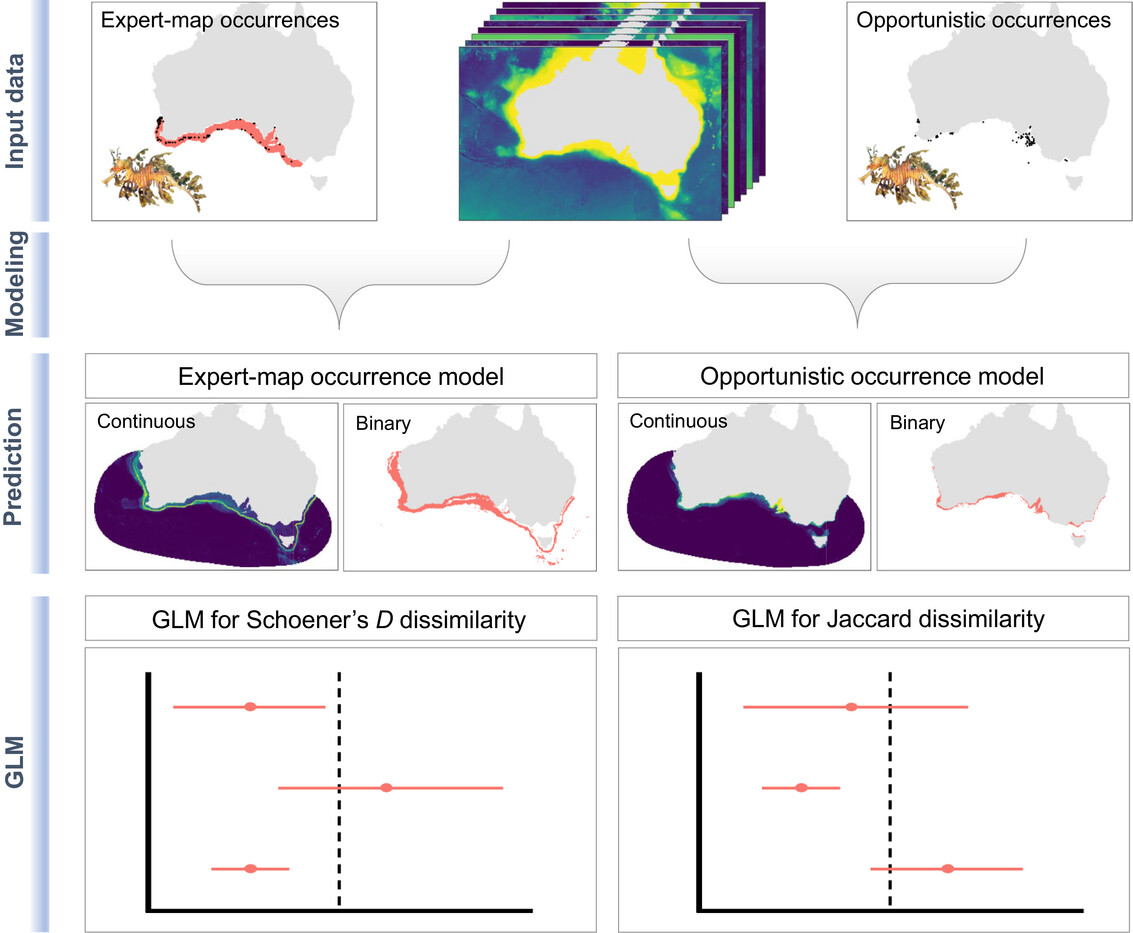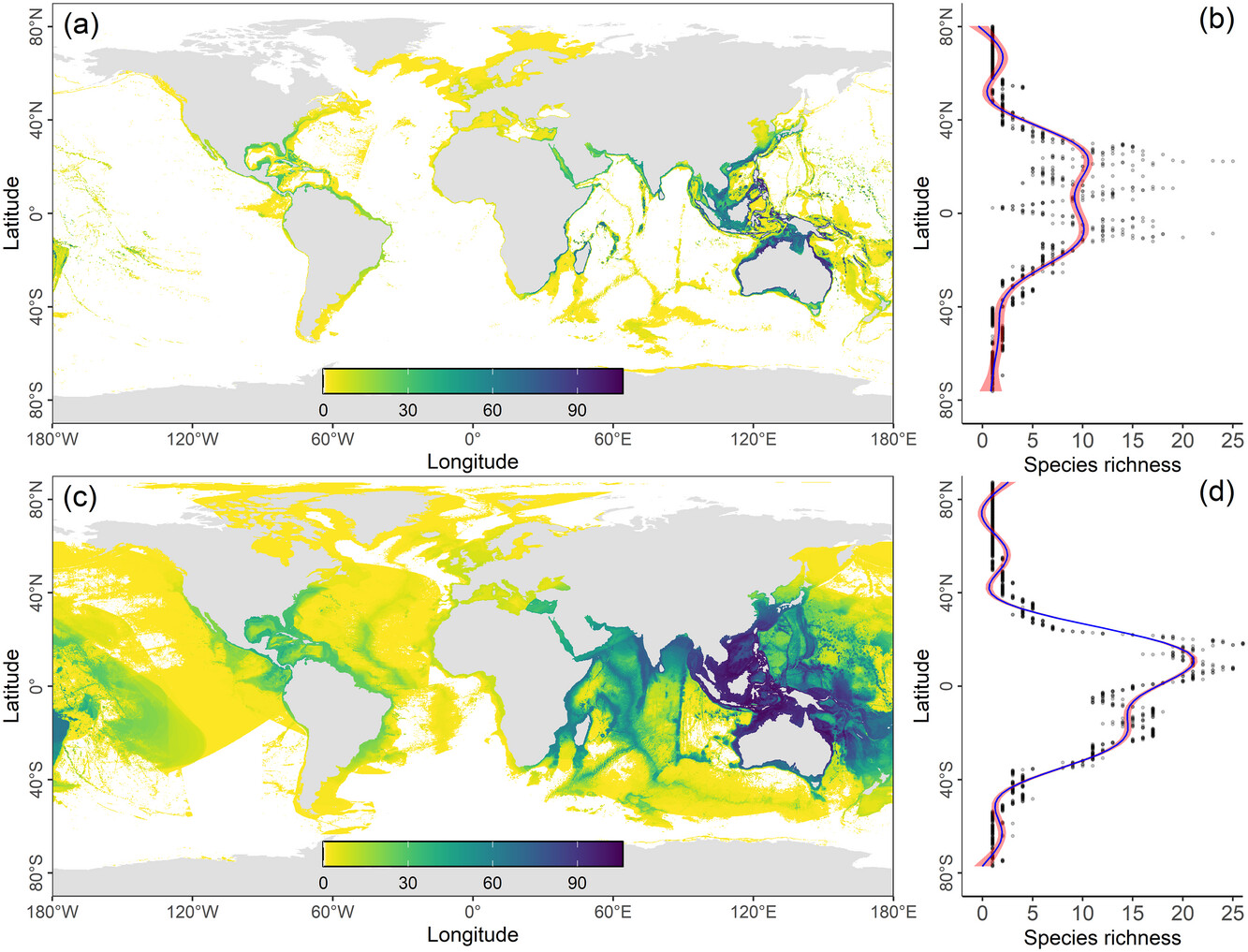Two sources of species' distribution data – new publication

Opportunistic occurrence records (points) and expert range maps (polygons) are both widely used sources of species' distribution data for species distribution models (SDMs). However, it is unclear how SDMs based on these data differ in performance, particularly for the marine realm. An international team of researchers from China, Japan, Italy and Hungary studied this question by building SDMs for 233 marine fish species with these two distribution data types and comparing their performances and potential distribution predictions. The research was led by Zhixin Zhang from the Chinese Academy of Sciences. Ákos Bede-Fazekas, assistant professor of our department, participated the research, the results of which were recently published in the D1-ranked journal "Conservation Biology". The study revealed that projecting to distinct regions with no occurrence data, models calibrated using opportunistic occurrence records performed better than those using expert range maps, indicating better transferability to new environments. The findings highlight the sensitivity of species distribution predictions to the choice of distributional data.



